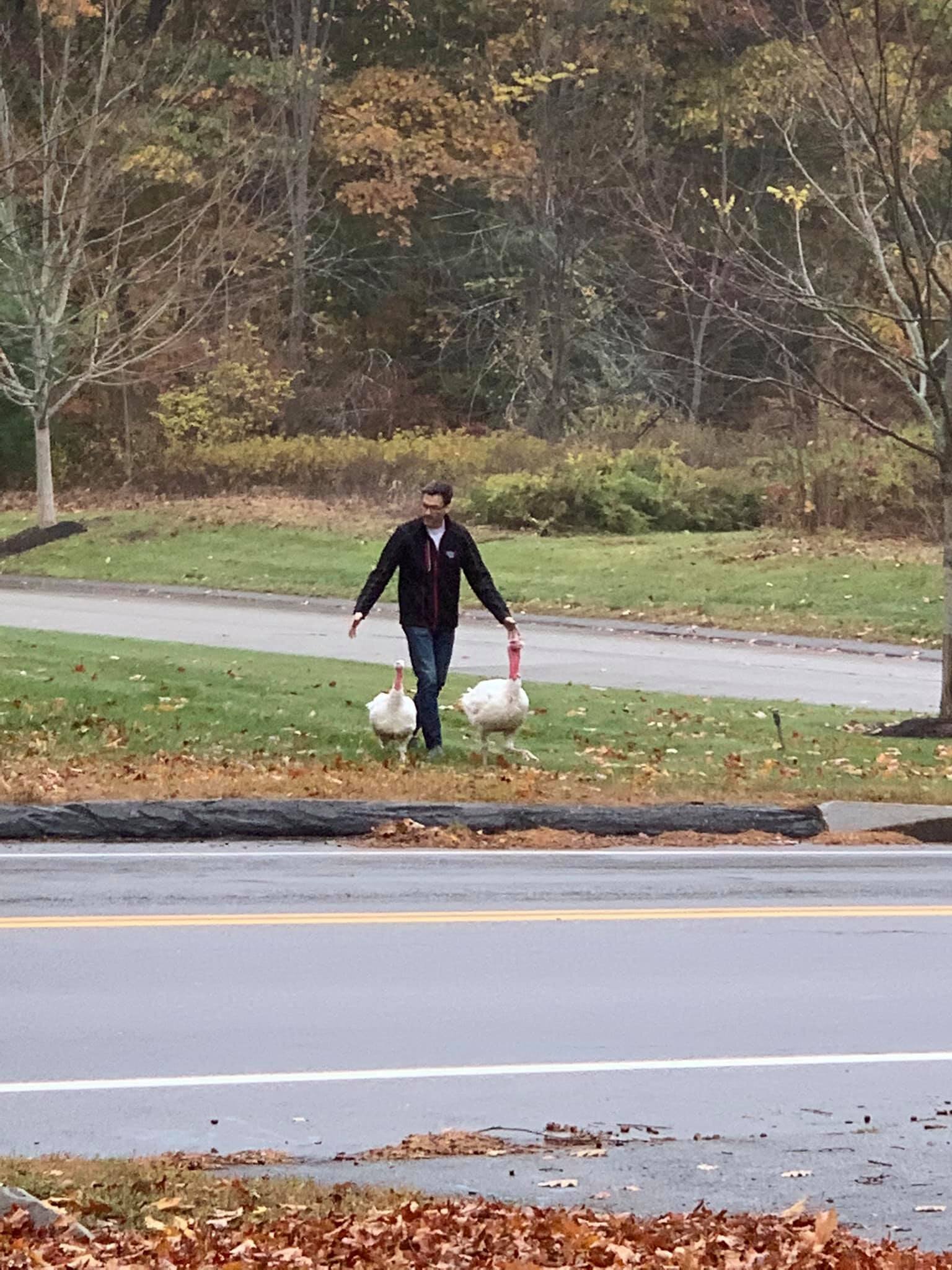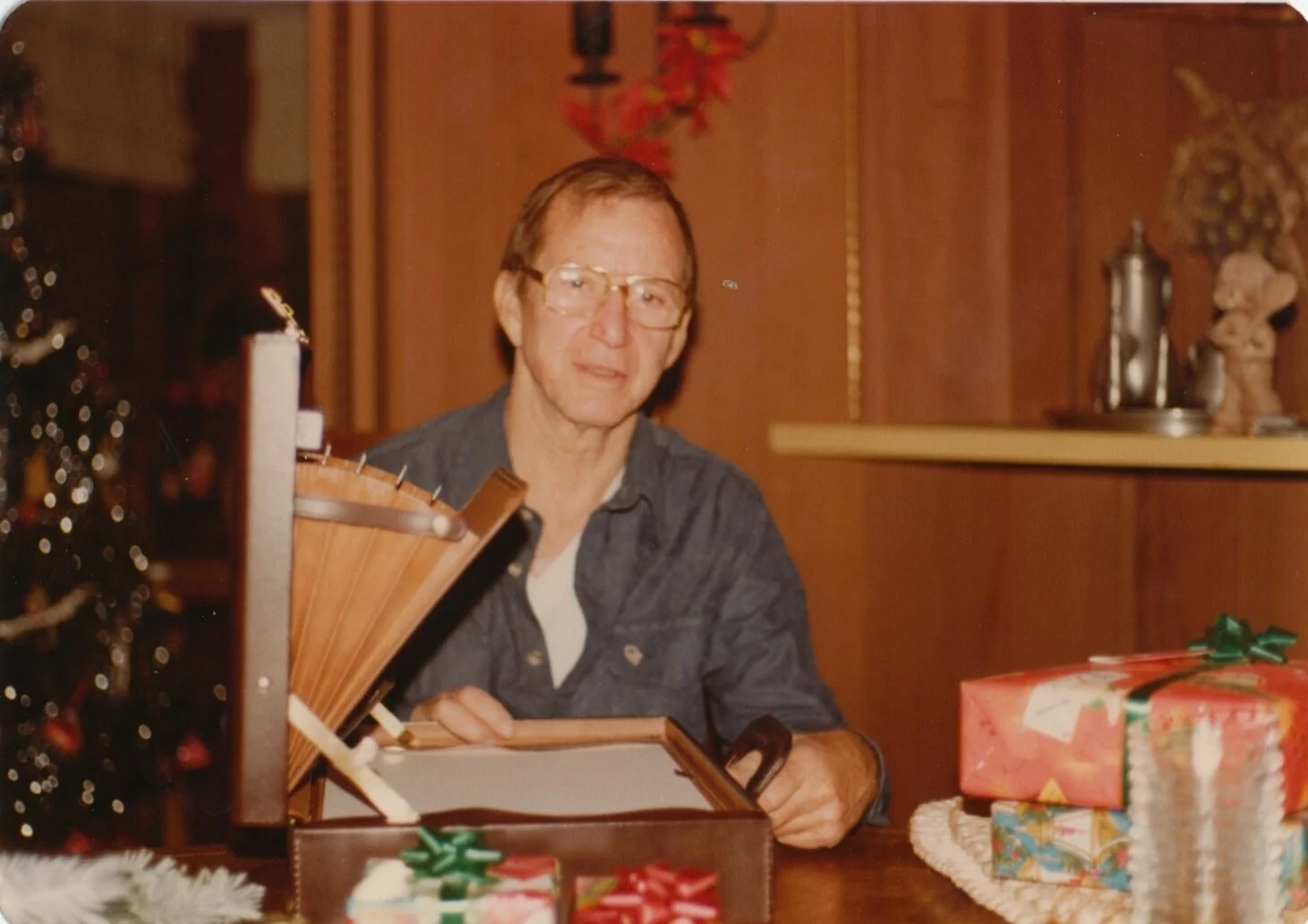You can tell the quality of the science by the scale of the props involved
/Back in the fall, my Bride & I went in to the Critter's 5th grade class to teach chemistry for the day. Which was rich in irony, as I struggled to find the joy in chemistry when I was a student. But the experience itself was fun - fifth graders are at that great age where they're young enough that they're not too cool to express interest in a subject, and old enough that you can make fun of them without creating a need for lasting therapy. I told the teachers when they hit the physics & engineering segment of the curriculum, let me know. That's my wheelhouse, and I had a couple of ideas I thought might be fun.
Here is a truckful of ideas:
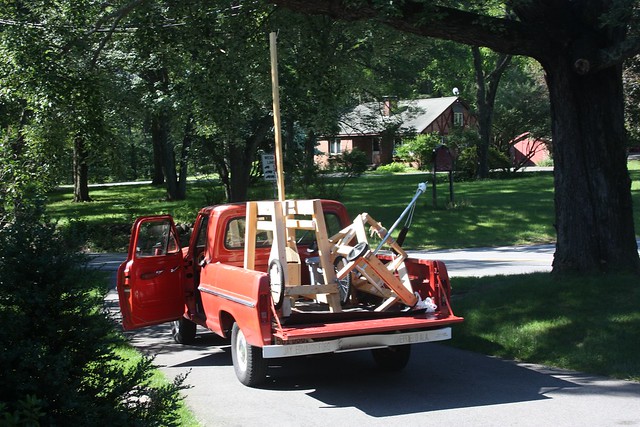
I asked the teachers how many kids to expect, and if we could consolidate the classes. I enjoyed the smaller groups of individual classes for the dry ice demonstrations in the fall. But with the larger catapults, we needed to move outside (for obvious reasons), and I was a bit worried about the higher likelihood of catastrophic breakdown. Which is a lesson of a different kind, I suppose.
Soon enough, the first horde of kids were crossing the field.
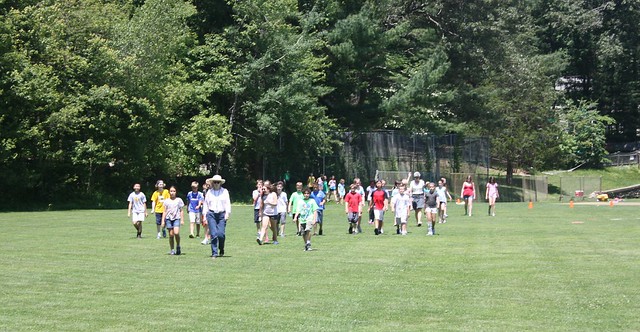
My lesson plan was more or less as follows:
- Intro: Simple machines, Complex machines, and Hurling Produce
- The basic lever in your arm - come up and throw a potato
- Extending the lever - a lacrosse stick hurls potatoes further
- The Slingshot - using potential energy in a device to save my rotator cuff because I am old
- How the Romans did it - A torsion engine, an onager, and an intro to siege warfare
- Le Trebuchet - Counterweights & hurling bigger produce with an improved design
- The Potato Cannon - The chemical potential energy of Aquanet, and a really loud noise
There was a lot of improvisation in this basic plan, but I showed up with a tub full of cabbages, a couple of watermelons and sacks of potatoes, and figured we could make a go of it.
I showed up an hour early to set up. I had promised the Critter that I would do my best to embarrass her, so I brought an extra prop or two along. I did a good portion of the lecture while wearing my Roman legionnaire helmet. The other kids seemed to dig it.
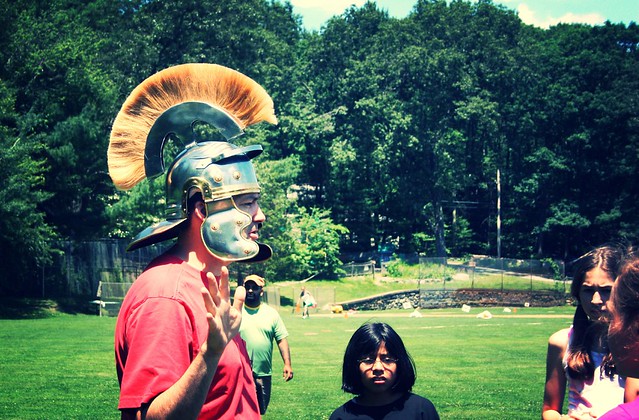
(Someone in the school administration office asked me 'Where did you ever find that helmet!?' To which I answered: On the internet, I am two clicks away from just about anything.)
The sling shot and lacrosse sticks served as simple ways to get the kids up and into the action: we'd hurl about half a sack of potatoes down range, and then other kids were jumping to volunteer to run down and collect them. Honestly, I probably didn't have to do anything more than let the kids play with this for an hour, but I had a few other props prepared, so we moved it along.
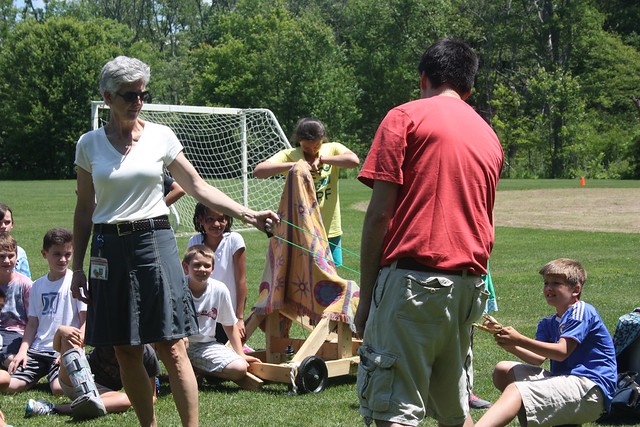
I knew from the get go that I wanted to make another catapult. Bigger this time, and more durable. So I started with the same basic plan, and scaled it up a couple of notches. I scavenged some wheels off a non-functioning wagon, and added more cross-bracing.
Soon enough, I had a working potato-onager.
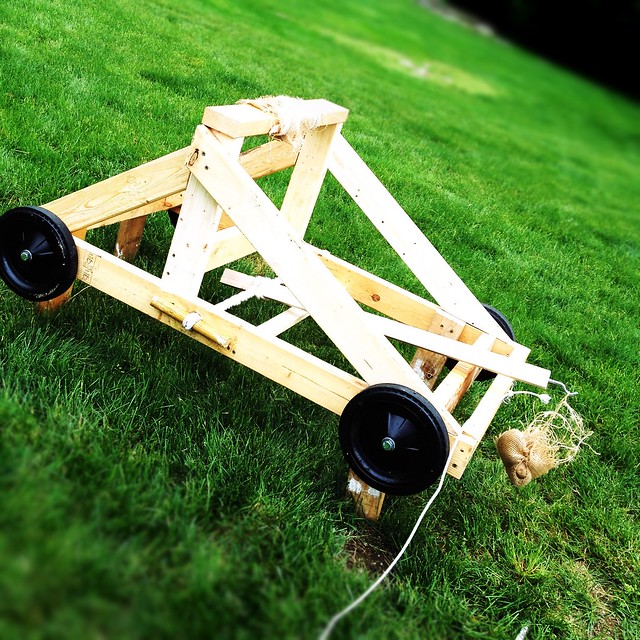
I actually ended up modifying this further. The onager is under a lot of stress, and has a bad tendency to shake itself apart after a few throws.
I switched out the arm for a metal pipe, and added a more durable & functional sling to the end to give it the arc & trajectory I wanted.
This is me, apparently incorporating an explanation of how the Bangles had a hit song in the mid-80's with such a stupid song.
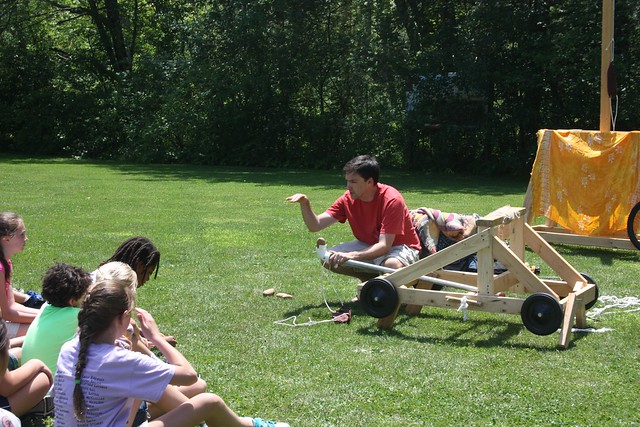
By comparison, the trebuchet was simple to build. And a lot bigger. It only took me a couple of hours to knock it together, and scrounge about 125 lbs of weight to serve as a counterweight. (I knew those dumb bells would eventually come in handy).
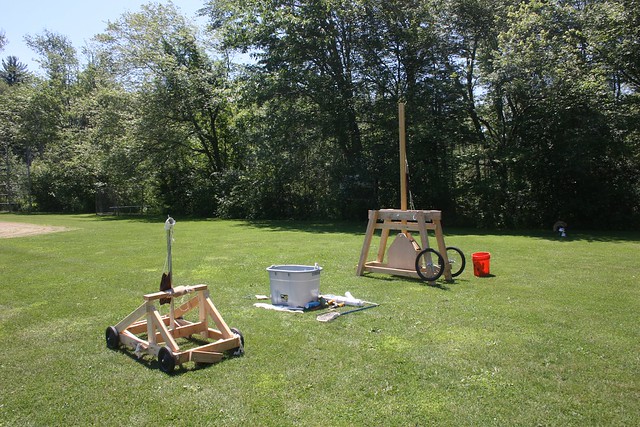
I had the kids throw some cabbages by hand for comparison, and then we tried launching them from le trebuchet.
The trebuchet won.
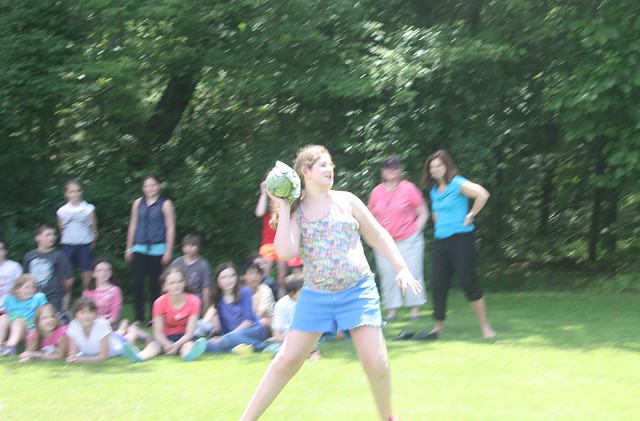

Then we upped the ante, and launched a watermelon.
It was almost 90 degrees out. The kids spontaneously chased the smashed watermelon and scooped it up off the grass as a treat.
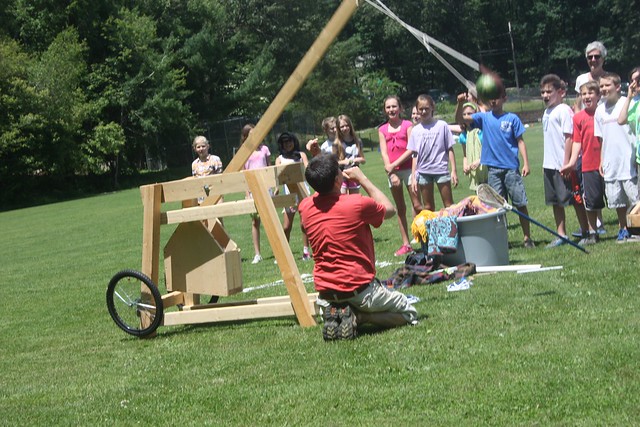
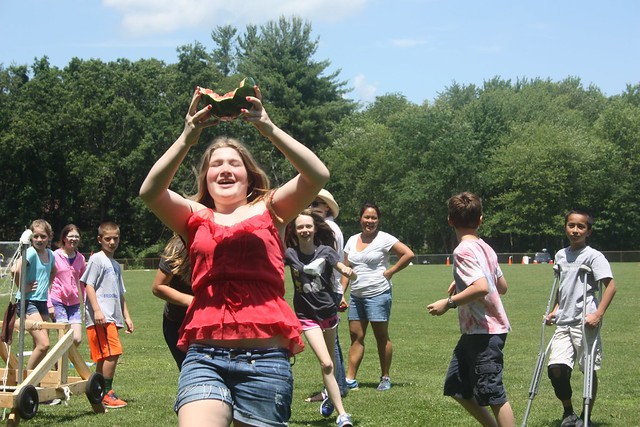
We ended with a potato cannon that I borrowed from one of my colleagues. I've never built one, though I've thought about it a couple of times. (there are countless versions of them on the internet).
A little bit of PVC, some aquanet and a click-starter from a Weber, and you've got a pretty serious projectile demonstration.
It's also loud. Which makes it even more fun.
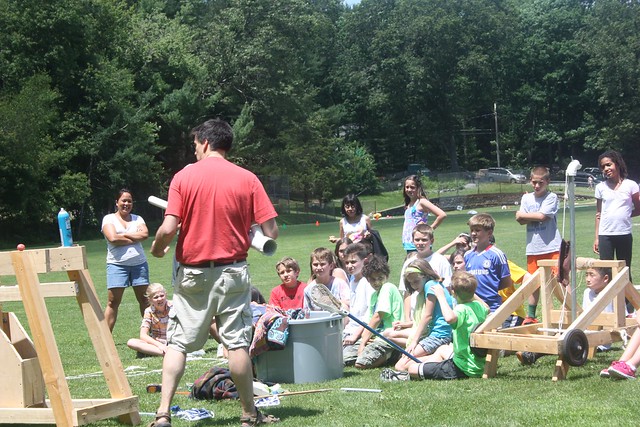
Once again, I owe a huge debt of gratitude to the book 'The Art of the Catapult' by William Gurstelle. There's nothing here that took more than a few hours to knock together, and provided a huge amount of fun, and hopefully some tactile examples of some of the hardcore physics concepts that the kids will remember, and maybe want to learn more about. And of course to the teachers for inviting us in to make a fool of ourselves throwing various forms of produce around the field for an afternoon.
Plus: It gave me an excuse to buy a legionnaire’s helmet.
Everybody wins.




